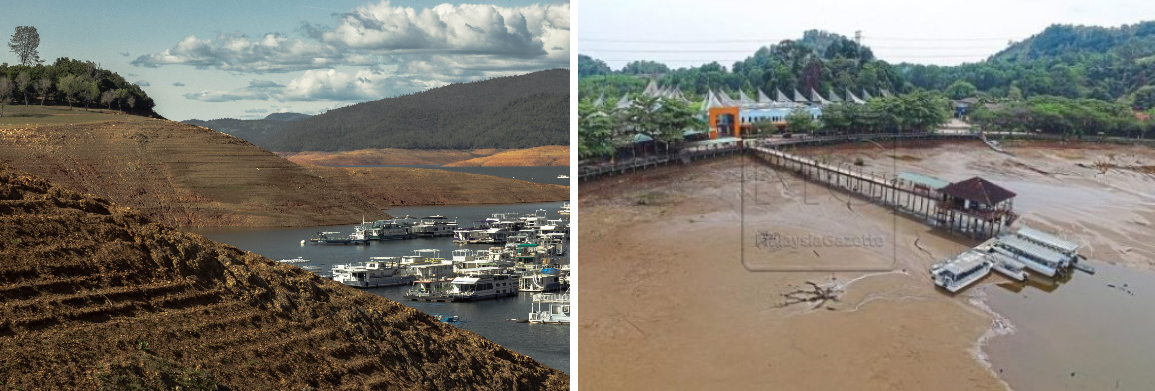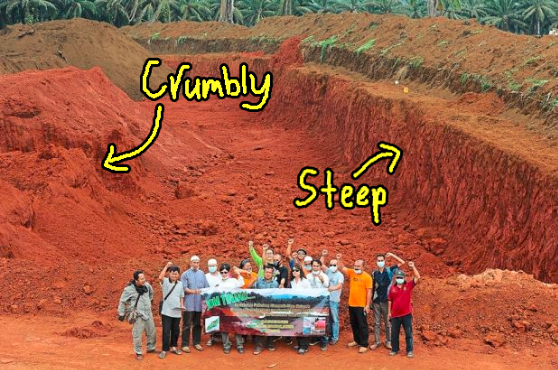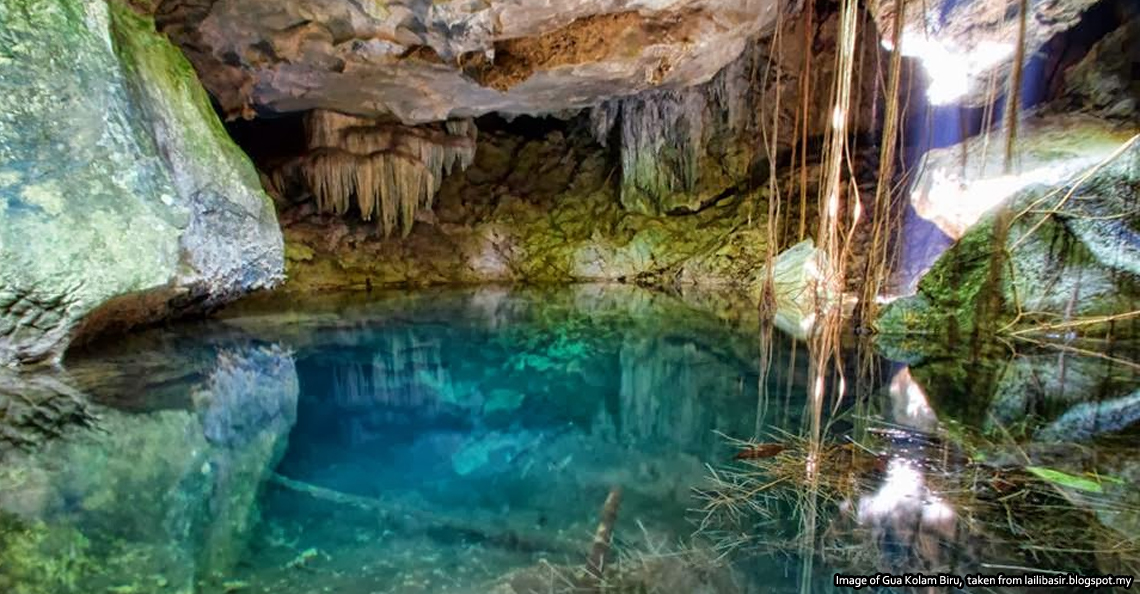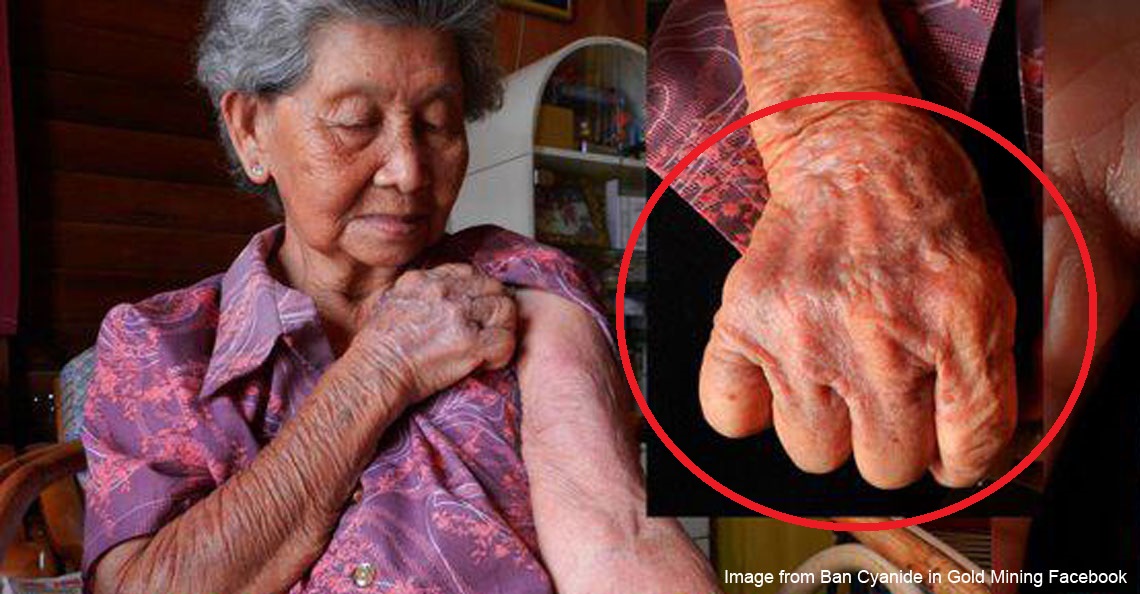3 Pahang kids drowned in a mining pool. But why is it more dangerous than lakes?

- 4.0KShares
- Facebook3.8K
- Twitter17
- Email38
- WhatsApp73
A bunch of kids were playing at a disused bauxite mining pool over the weekend in Taman Sungai Karang Jaya, Pahang. It was their first time going there, though they just meant to play near it, not swim in it.
“I then saw a piece of black rubber and tried to reach for it before falling into the pond. I almost drowned but managed to save myself by swimming out. However, my pants came off and my sister tried to reach for it.” – Mohamad Aiman Hakimi Zuhairi, 10, The Star
Aiman’s sister 12-year-old Salsabila, slipped and disappeared under the murky red water. Seeing that, their younger sibling Mahathir Mohamad, seven, and a friend, Nureen Ain Juwita Mohd Sharif, 10, jumped in to rescue her. Poor Aiman watched, frozen in horror, then ran to get help. Tragically, all three children drowned that Saturday (4 Feb).
And this is not the first time it’s happened…

Drowning happens quite frequently in Malaysia it seems, especially during the school holidays. It has become a very serious issue as drowning deaths are reportedly almost on a monthly basis.
We couldn’t find statistics on drowning in mining pools specifically, but drowning in general, yes. According to the Statistics Department, an average 596 people drowned annually between 2009 and 2013. This bring the average to 1.6 per day! However, data from the Fire and Rescue Department indicated it’s MORE than that – at an average of 700 people drowning annually.
In October 2015, Nabil Ariff Shaari, 14, drowned while swimming in a bauxite mining pool in Ladang Makmur, Bukit Goh (also Pahang).
In another incident, two 21-year-olds drowned in an abandoned mining pool in Balakong, Kajang over a dare. Shahrul Azwan Mohammad and Muhammad Hafiz Norazman fishing there with two others when they started challenging each other to swim in the dirty water. When Hafiz did not surface after several minutes, Shahrul went in after him, disappearing in the water too. The Selangor Fire and Rescue Department had to send their Scuba Team to find their bodies.

The concern level is high enough that in 2014, the National Institute for Occupational Safety and Health (NIOSH) called for a comprehensive data bank on drowning deaths. Each case should contain the victim’s age, gender, location and details of the incident, they said.
“It is just unacceptable to see more drowning deaths, especially those that involve children because of negligence and lack of safety precautions or facilities provided by those responsible for public safety.” – Tan Sri Lee Lam Thye, Chairman of NIOSH, NST
The point is, swimming in mining pools is DANGEROUS!
But they look like lakes. If people can swim in lakes, why not mining pools?

From above, mining pools can look deceptively ‘safe’, like you would expect it to be like a lake. What’s more there’s no current to drag swimmers under, so why would it be unsafe to swim in mining pools right?
Maybe not everybody knows this, especially children, but in comparison to lakes or rivers, mining pools can be very deeeeeeeeee…p. And the thing is, mining pools do not become deeper gradually, unlike lakes. Most lake photos we Googled looked like they have somewhat flat terrain, or even if they are sloped, it’s not very steep, it’s more gradual. Think of it as a mug (mining pool) vs a plate (lake). A diving team in the US investigated the hidden dangers of swimming in old mining pools and said:
“It’s very warm, shallow and then out of nowhere…you just fall. And the water temperature drops at least, 15, 20 degrees. You can have drop-offs to 40 feet, 60 feet.” – Devon Hausmann, Hamilton Township Dive Team, NBC
Plus, the ground could easily collapse under a person’s weight, making it hard to keep ones footing or grab on to the side. Mining pools can have sides that are steeper than coastal cliffs, so it’s very easy to jump in, but almost impossible to climb back up.

Unfortunately we couldn’t find the depth of this Pahang mining pool that claimed the lives of the three children, but according to witnesses, it.is.deep. One person who said so was Zam Abdul Rahman, 37, a villager who jumped in with a safety vest to retrieve Nureen’s body at the bottom of the pond. Fearing another tragedy, residents took the initiative to drain the water from the disused pool:
“I was relieved to see no more water in that pool that killed my youngest child. I hope this incident served as a lesson to all…if we look at the pool now, it is deep and scary. It would be very dangerous for anyone to fall into the pool, especially young children.” – Mohd Sharif Awang Ngah (Nureen’s dad), Malay Mail
Last January, Bernama reported that Kampung Bukit Kubang Badak and Taman Satelit nearby have pools up to 20m deep (!) and 40 hectares of mining area (about the size of 48 FIFA football fields by these calculations). There are many pools left uncovered that have basically become ‘death traps’.
So how to protect people’s safety?

NST reported that among the factors which caused drowning in Malaysia are unrestricted and ready access to such places (ie. beaches, rivers, lakes and mining pools), and a disregard or lack of knowledge of water conditions.
What should have been done with these disused mines all around the country – best practices and stuff – is to FILL up the mining pits and FENCE them up, as well as install warning signboards around the area. After the fateful Saturday accident, Malaysiakini reported that the Natural Resources and Environment Ministry will be instructing all bauxite operators to do that. At least they’re finally doing something.
Previously, Pahang residents and NGOs had been angry with miners for turning Kuantan all red like Mars with bauxite dust. Then the authorities imposed a temporary halt on mining activities. Now it appears that the bauxite mines still pose pose a danger to residents…just in a different way. Either way, these mining pits are the bane of their existence!

Unable to overcome his grief, Nureen’s grandfather wants to sue the parties responsible for the mining. Aidil Omar, 78, who is a retired soldier, related that in her last hours, his granddaughter ate lunch with him and asked her grandmother (his wife) for pocket money to buy a few things at a nearby shop. Nureen often went to her grandparents’ house to play, said Aidil, in sobs.
It is heartbreaking that this had to happen to open people’s eyes. However, we were glad to read that the authorities are finally going to refill the abandoned, dangerous mining pits. If they win a court case, the victims’ families may get compensation, but no amount of money in the world can ever replace their loved ones.
- 4.0KShares
- Facebook3.8K
- Twitter17
- Email38
- WhatsApp73



